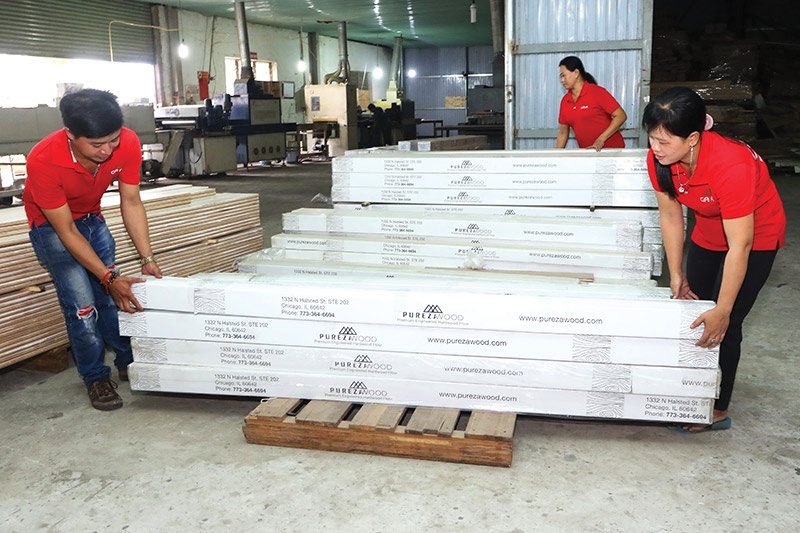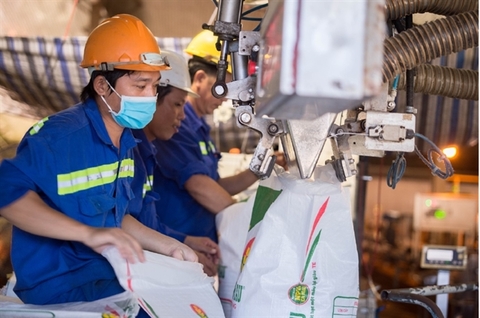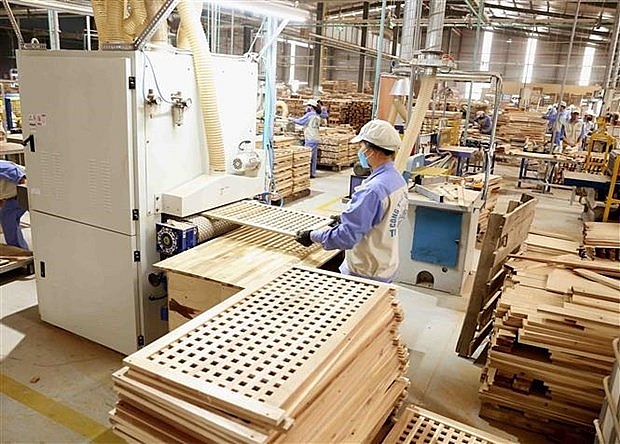Competition tightens up for Vietnamese timber sector
Competition tightens up for Vietnamese timber sector
After related US delegations held talks with Vietnam’s Ministry of Industry and Trade on trade issues last week, it has become apparent that Vietnam’s wood and timber industry will need to up its game to hold and eventually increase its market share in the United States.

Delegations of the United States Department of Commerce (DOC) and the US Trade and Development Agency visited Vietnam last week, working with the Ministry of Industry and Trade (MoIT) on a number of trade issues.
However, no content was announced after the working session between the two sides, except that the MoIT’s Deputy Minister Do Thang Hai suggested, “The DOC urgently resumes its dialogue with Vietnam on the issue of the objectivity and fairness in trade remedy investigation cases.”
Meanwhile, since June 6, the DOC has already investigated two issues: scope ruling and evasion of trade remedy tax (anti-circumvention) with wooden cabinets imported from Vietnam.
The examination is conducted at a time of high inflation in the US, forcing people to pay more for food, gas, and rent, thus reducing their ability to buy furniture.
The American Kitchen Cabinet Alliance in April filed a petition with the DOC, alleging that Vietnamese exporters importing cabinet parts from China were subject to trade remedies, as these would fully assemble their products in Vietnam before exporting these to the US.
From 2019 to 2021, after the US imposed tariffs on China, imports of products under investigation from China into the US decreased by 54 per cent, from $2.5 billion to $1.6 billion.
Meanwhile, exports from Vietnam to the States increased by more than 130 per cent, from $1.37 billion to $2.7 billion. However, the volume of imports from China into Vietnam also increased nearly four times, from $232 million to $810 million.
Do Xuan Lap, chairman of the Vietnam Timber and Forest Product Association (Viforest), commented, “This week, we will respond to the US side on the first content related to the review of the product range. Right after that, we will deploy the second content related to trade remedy tax evasion.”
According to US law, the DOC will have a final conclusion 300 days after its initiation.
With more than 30 years of experience doing business with the US market, Lap believes that businesses will suffer certain impacts. “But what worries me most is that the US government may impose temporary taxes and this may cause buyers to reduce orders to avoid risks in the future,” he said.
The growth rate of wood and timber product exports to the US market slowed down in March, by 5.9 per cent compared to last March, according to calculations by the General Department of Customs.
Many economists find that there are two opposing trends that govern the volatility of global timber trade chains: Firstly, global supply chains continue to strengthen and even expand as most are controlled by multinational corporations – so maintaining and developing complex chains is inevitable.
On the other hand, trade protection trends and policies of many countries are becoming stronger whenever there are crises in international relations, and are also spurred by many developing countries that want to penetrate deeper into the global supply chains.
The landscape of the global timber trade may soon change, as the US government lifts some punitive tariffs imposed by former President Donald Trump on Chinese imports – a move that economists say was to reduce inflation and prevent the economy from falling into recession.
The US government is likely to also change its trade policy with China to control inflation. Tariffs on imports from China were first imposed by the US in 2018 and gradually increased to about $350 billion in imports each year, some of which will begin to expire at the beginning of July.
According to official US government sources, there have not been any requests for a further extension from US industries.
Italy’s Centre for Industrial Studies forecasts that the international trade outlook for furniture in 2022 and 2023 is favourable, but uncertain, due to supply constraints, energy costs, and other logistics issues. The majority of furniture supply comes from China, Vietnam, Poland, Germany, Italy, the US, France, the United Kingdom, and the Netherlands.
Lap of Viforest said, “The main factors that promote the wood industry to continue to grow positively in the US market in the coming time include that China does not encourage the development of furniture. Meanwhile, Italy, Germany, and other developed markets are reducing production due to recession, rising costs, and limited timber supply.”
One point frequently mentioned by policymakers is that Vietnam is becoming an important link in the global timber trade, with the number of exports increasing year by year.
In 2020, these exports reached a value of $12.37 billion, and one year later the figure rose to $16.5 billion. But economists usually remain realistic and also warn that Vietnam’s wood industry has many potential risks.
Assoc. Prof. Dr. Pham Tat Thang from the Vietnam Institute of Industrial and Trade Policy and Strategy under the MoIT, said that Vietnamese businesses must anticipate that the protectionism for domestic production in the US is very high, especially for agricultural products and food.
“The US’ trade and technical barriers are increasingly stricter to protect the environment and workers. When detecting signs of harming domestic production, the US government immediately adds new regulations and laws to deal with it,” Thang said.
“Many Vietnamese enterprises plan to sell more wooden furniture to the US market, but forget that the US still maintains a multilateral trade policy with basic principles shaped along with liberal and open policy views,” Thang added. “A huge challenge for Vietnamese enterprises also comes from competing with China in order to maintain their market share in the US.”
























